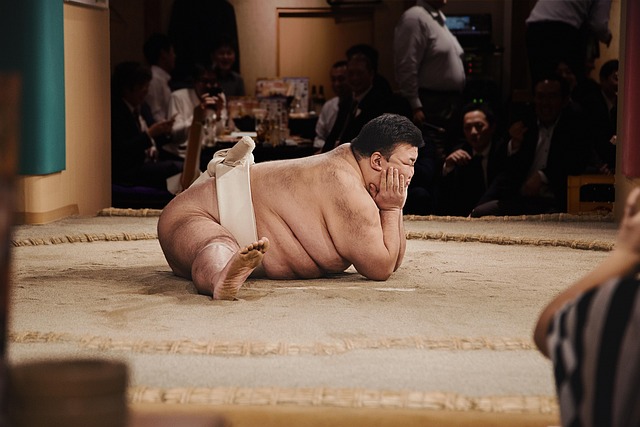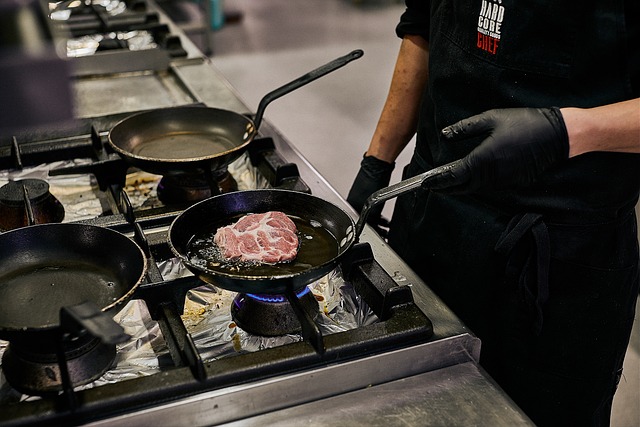A comprehensive non-surgical fat reduction comparison reveals key differences between CoolSculpting and liposuction, guiding individuals in making informed decisions. CoolSculpting uses cryolipolysis to freeze and eliminate fat cells without incisions or anaesthesia, offering lower costs, minimal downtime, and effective results (80-90% success rate). Liposuction, while more invasive with higher initial expenses, provides permanent outcomes (over 95% success rate) and precise targeting but requires longer recovery periods. Insurance coverage plays a significant role in cost-effectiveness, favoring CoolSculpting due to its non-surgical nature and fewer follow-up treatments. Understanding risks, recovery times, and desired outcomes is crucial when choosing between these two fat reduction methods.
Considering non-surgical fat reduction options? This comprehensive guide compares CoolSculpting and liposuction, two popular choices. We explore every aspect from understanding these procedures, their benefits, costs, recovery times, risks, and patient outcomes to help you make an informed decision. Whether you’re drawn to the non-invasive nature of CoolSculpting or the targeted results of liposuction, this comparison will equip you with the knowledge to choose the best option for your body and budget.
Understanding Non-Surgical Fat Reduction Options

Non-surgical fat reduction procedures have gained significant popularity as alternative options to traditional surgery for achieving a slimmer figure. CoolSculpting and liposuction are two leading contenders in this field, each with its own unique approach to fat elimination. Understanding these treatments is crucial when considering non-surgical fat reduction, as they offer distinct advantages and are suited to different needs.
CoolSculpting, for instance, uses cryolipolysis, a process that freezes and destroys fat cells without harming the surrounding tissue. It’s a non-invasive procedure that can be performed in a doctor’s office, making it an attractive option for those seeking minimal downtime. Liposuction, on the other hand, involves sucking out excess fat through small incisions, providing more precise results but requires surgical expertise and recovery time. A non-surgical fat reduction comparison reveals these differences, enabling individuals to make informed decisions based on their desired outcomes, comfort levels, and individual circumstances.
CoolSculpting: An Overview of the Procedure and Benefits

CoolSculpting is a non-surgical fat reduction procedure that has gained popularity in recent years as an alternative to liposuction. During the treatment, a device is applied to the target area, which uses controlled cooling to freeze and kill fat cells. This process prompts the body’s natural response to eliminate these cells, leading to reduced fat in the treated areas. One of the key advantages of CoolSculpting is its non-invasive nature; it doesn’t require incisions or general anaesthesia, making recovery time minimal compared to surgical procedures like liposuction.
This method offers several benefits, including less downtime, no scarring, and a relatively quick return to normal activities. It’s particularly effective for targeting stubborn fat in problem areas such as the abdomen, love handles, thighs, and buttocks. While results may vary from person to person, many patients appreciate the convenience and minimal disruption of CoolSculpting compared to more invasive fat reduction methods.
Liposuction: Surgical Fat Removal Process and Considerations

Liposuction is a surgical procedure that involves suctioning fat from specific areas of the body to achieve a slimmer, more contoured appearance. It’s a popular choice for those seeking non-surgical fat reduction and is particularly effective at treating localized fat deposits that are resistant to diet and exercise. During the procedure, a surgeon makes small incisions in the target area, inserts a thin, vacuum-like device called a cannula, and applies suction to gently remove fat cells from beneath the skin.
Compared to non-surgical methods like CoolSculpting, liposuction offers more precise results as it physically removes fat cells. However, it comes with surgical risks, including potential complications like infection, bleeding, and scarring. The recovery period can be longer, and there may be a need for touch-up procedures over time. It’s crucial to consult a qualified surgeon to discuss your specific goals, understand the procedure’s scope, and weigh these considerations before choosing liposuction as your preferred non-surgical fat reduction method.
Cost Analysis: Initial Expenses for Each Treatment

When comparing CoolSculpting and liposuction for non-surgical fat reduction, understanding the initial expense is a key aspect in any decision. CoolSculpting, a popular choice, typically involves fewer upfront costs compared to liposuction. The procedure itself is often more affordable, with additional benefits like no downtime or recovery period. This makes it an attractive option for those seeking a cost-effective solution without the invasiveness of surgery.
Liposuction, while effective in targeted fat removal, usually comes with higher initial expenses due to its surgical nature. The procedure requires specialized equipment and trained professionals, which significantly impacts the overall cost. In contrast, CoolSculpting offers a more accessible entry point for individuals considering non-surgical fat reduction treatments, making it a competitive choice in terms of financial investment at the outset.
Long-Term Financial Comparisons: Insurance Coverage and Potential Savings

When comparing CoolSculpting and liposuction for non-surgical fat reduction, long-term financial considerations are crucial. Insurance coverage plays a significant role in determining overall cost-effectiveness. Many insurance providers offer partial or full reimbursement for CoolSculpting treatments, especially when performed for medical reasons. This can result in substantial savings compared to liposuction, which is often not covered by standard policies due to its surgical nature.
While initial costs may vary, the long-term financial picture leans towards CoolSculpting as a more budget-friendly option. Liposuction requires ongoing maintenance and potential revision procedures, adding to the overall expenditure over time. In contrast, CoolSculpting’s non-invasive approach often provides lasting results with fewer follow-up treatments needed, translating into potential savings for patients in the long run.
Recovery Time and Downtime: Which Option Offers Less Disruption?

When considering non-surgical fat reduction options, understanding recovery time is key to deciding which procedure aligns best with your lifestyle and needs. CoolSculpting, a popular fat-freezing treatment, boasts minimal disruption and quick turnaround times. Patients can typically return to their regular activities within a few days, experiencing little to no downtime. This makes it an attractive option for those who desire rapid results without the extensive recovery periods associated with surgical procedures like liposuction.
Liposuction, on the other hand, involves incisions and suction to remove fat cells, leading to more significant post-operative swelling and bruising. While still considered relatively quick compared to traditional surgeries, the recovery period for liposuction is generally longer than CoolSculpting, often requiring several weeks of rest and activity restrictions. This extended downtime can impact daily routines and work schedules, underlining the importance of considering how each procedure fits into your existing lifestyle.
Potential Risks and Side Effects: A Comprehensive Look

When considering non-surgical fat reduction options, understanding potential risks and side effects is crucial. Both CoolSculpting and liposuction have their share of considerations in this regard. With CoolSculpting, one of the most common side effects is temporary numbness or tingling in the treated areas, which typically resolves within a few weeks. Some individuals may also experience mild swelling, bruising, or discomfort during and immediately after the procedure, but these usually subside quickly. On the other hand, liposuction involves breaking down fat cells with suction, which can lead to more significant temporary side effects like swelling, bleeding, and numbness. In rare cases, patients might encounter complications such as infection, fluid accumulation, or tissue damage, especially if not performed by a qualified professional.
While both procedures aim for safe and effective fat reduction, it’s essential to remember that they cater to different needs and body types. CoolSculpting is non-invasive, making it a preferred choice for those seeking minimal recovery time and fewer risks. Liposuction, being an invasive surgical procedure, offers more precise fat removal but comes with a higher risk profile. A comprehensive consultation with a medical expert can help determine which option aligns best with individual goals and health considerations.
Patient Results, Satisfaction, and Success Rates

When comparing CoolSculpting and Liposuction for non-surgical fat reduction, understanding patient results, satisfaction, and success rates is paramount. CoolSculpting, a procedure that uses cryolipolysis to freeze and eliminate fat cells, boasts impressive outcomes with minimal downtime. Patients often appreciate the convenience and less invasive nature of this treatment, leading to higher satisfaction levels. According to various studies, CoolSculpting has a success rate of around 80-90% in targeted areas, with results becoming apparent within several weeks.
On the other hand, Liposuction, being a surgical procedure, offers more precise fat removal but comes with longer recovery times and potential risks. While it provides permanent results for the treated areas, patient satisfaction can be influenced by post-operative care and scarring. Success rates for Liposuction are consistently high, exceeding 95% in most cases, as long as the procedure is performed by a qualified surgeon. However, these procedures cater to different preferences and circumstances, with CoolSculpting being less invasive and Liposuction providing more dramatic and permanent results.
